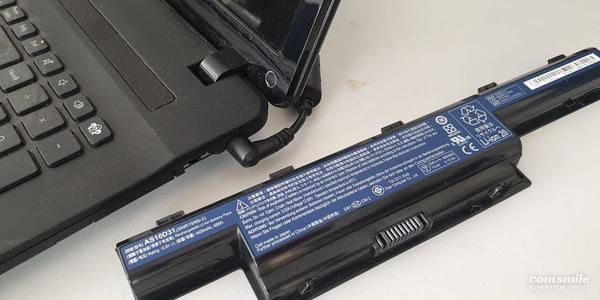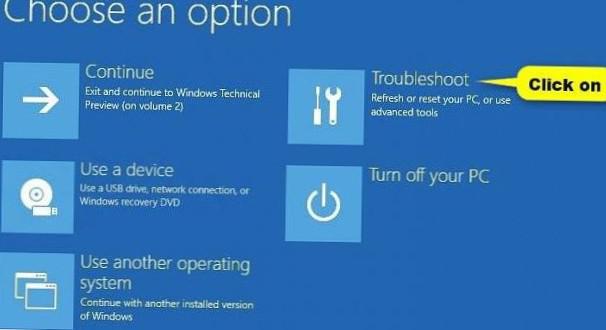What would your digital world be like without your laptop? Your ultraportable PC is the key to keeping you connected, whether you're in the office, at home, in the car, or 30,000 feet in the air. You depend on your laptop's battery to to stay productive day and night, but what happens when the battery stops charging?
When you plug your laptop into a power source, you're usually greeted by a chirping ping or a tiny LED light, reassuring you that everything's fine in the battery department. However, once you've determined that plugging in your laptop's AC adapter without such animation, something can go seriously wrong.
Dealing with a laptop that suddenly won't charge is definitely a headache, but don't let your frustration get the better of you just yet. You can immediately assume that your dead laptop battery means a costly trip to a PC repair shop , but that's not always the case. With this guide, we'll help you understand why your laptop battery isn't charging and give you 8 helpful tips to fix it.
Why has my laptop battery stopped charging?
Before you can start fixing your laptop that won't charge, you must first understand why it didn't work in the first place. Computers require hundreds of working parts to function properly. So when something goes wrong, you'll probably scratch your head and wonder why.
While there are many variables that can contribute to your laptop battery losing charge, we've narrowed down the most common causes into three main causes: power cord issues, software bugs, and declining battery health.
Problems with the power cord
When you take your laptop from place to place, you also need to take your laptop charger with you. Between wrapping it up to pack it easily and filing it in a weird way to accommodate a far-flung outlet, your cord can take a beating in its first few days be bent out of shape.
Key components work together to successfully power your laptop. Many PC chargers have a two-piece power adapter; one piece that plugs into the wall and another that plugs into your computer. When both are securely connected and If your PC's charging light isn't on, you may be dealing with a faulty or damaged cable.
software error
Windows 10 has proven to be one of the most self-sufficient operating systems in PC history. It's able to diagnose itself when internal problems arise and can initiate critical updates to ensure all your software is up to date .It can, however, miss things.
It's possible your computer's settings configuration is set to shut itself down at a low level or to go into sleep mode after minutes of inactivity. While these settings aren't entirely "malfunctions," they say:
can
seem to be.
Software malfunctions occur when your computer's drivers are outdated. An outdated driver can force your computer to refuse power from your AC adapter. Reinstalling the battery driver is a quick and easy fix to this type of problem.
Declining battery condition
Like any other technology, laptop batteries don't live forever. One of the most common reasons a laptop battery will stop charging is its declining condition. Just like an old laptop computer has a hard time holding a charge even an old laptop battery problems.
Before the battery died, did you notice that your laptop was doing the following:
Overheating while charging?
Lose charge quickly?
It takes longer to fully charge?
If so, any of these issues are surefire signs that your battery is aging. Not sure about the health of your battery?
Click here to use our step-by-step guide
How to run a battery report in Windows 10.
How to fix a laptop that won't charge
It's finally time to take the troubleshooting into your own hands. These 8 tips might save you a trip to the shop or a call to your PC manufacturer.
1. Check if you are connected
It may sound ridiculous, but it's worth checking that your laptop and charger are okay
Strictly speaking
plugged in. There's no hope of charging a laptop that's unplugged from a power source, so make sure everything is connected the way it should be.
Look at every point of contact, from the outlet to the power adapter, from the adapter to the laptop port. Everything should be plugged tightly with minimal slack. Don't forget to check the underside of your laptop to make sure the battery is firmly in place PC frame is seated.
You should make sure that the problem is not with the outlet itself. Blown fuses are common. Therefore, test a different outlet or reset the surge protector after verifying that all contact points are intact.
2. Confirm you are using the correct port
Today's computers are changing faster than ever. The birth of the USB-C port was a game-changer that can be found on the vast majority of the latest laptops today. These ultra-thin ports are great for ultra-thin computers, although newcomers to the port may be confused by their multipurpose functionality.
Computers with two USB-C ports are likely to have specific function names that you may not be familiar with. Generally, one USB-C port is for charging and the other is for data transfer. If your laptop charger is connected to the data transfer port and not the charging port is, no charging takes place.
Make sure your cables live in their intended places before blaming the hardware.
3. Remove the battery
If your laptop comes with a removable battery, follow these steps:
Step 1
.Remove any bolts or screws and remove the battery

step 2
.Press and hold the power button for 10-15 seconds
step 3
.Plug in the charger
step 4
.Turn on the PC
If your laptop turns on without a problem, you can assume that it's not your charger that's to blame, but a damaged battery that's giving your PC a headache. To confirm this theory, you can always reinstall the battery and try booting up again.
If your laptop does this
not
If you have a removable battery, you may need to see a professional specialist who can open up your hardware and run diagnostics.
4. Examine your power cords for breaks or unusual bends
Power cords are tiny, flimsy, and incredibly sensitive PC tools that can very well be the culprit in your laptop not charging while plugged in. Examine your power cords by feeling the length of the cord for any atypical bends, breaks, or bends that may indicate physical damage.
If you find that your cord has been bent by a hungry pet or a feral vacuum cleaner, replacing the affected end of the power cord is the simplest solution.
5. Update your drivers
Sometimes your PC just needs a quick driver update update to get it back to its original state. Follow these steps to update your Windows 10 laptop battery drivers.
Step 1
.Right click on the start menu to open the
Fast access
menu and select
device manager
step 2
.Under
batteries
, open the drop-down menu and right-click
Battery for Microsoft ACPI compliant control method
step 3
.Press in the new selection window
update drivers
Windows will ask you "How do you want to search for drivers?" and you have the option to let Windows search for them automatically or to search your PC manually for the appropriate software.
After the update, restart your PC and try charging again.
6. Assess the condition of your charging port
Plugging your adapter into the laptop's power port should be a hassle-free and enjoyable experience. Should you encounter any difficulties, whether it's from dust build-up or a wobbly seat, your problem is likely that you're not making a secure connection between your adapter and your computer be able.
If your PC jack is covered with dust and dirt, try cleaning your AC power connector with a toothpick or with compressed air. If your connection points are wonky, your problem may be a little more serious has been broken out of the inside of the case. To fix this, go to a computer repair shop for a cheap and easy fix.
7. Allow your PC to cool down
Batteries generate heat as they work hard to power your laptop, but when they work too hard, overheating can cause a number of problems. Rising battery temperatures can cause the sensor to misfire, ultimately telling your system that the Battery is either fully charged or missing.
If your laptop feels more like an oven when plugged in, place it on a cool, open surface without blocking the fans and allow it to cool. Try charging again once it's fully settled and feels cool.
8. Seek professional help
When you have exhausted all your options and tried all the troubleshooting tips and tricks, the best thing to do is to seek professional help. Ultimately, computers are incredibly complex machines and sometimes require a professional touch when it comes to repair and configuration.
Contact your PC manufacturer to put you in touch with a knowledgeable professional who may know exactly how to handle your make and model. If you need immediate personal assistance, make an appointment with an experienced technician who can carry out on-site diagnostics and repairs.
About the author
Tulie Finley-Moise is a Contributing Writer for HP® Tech Takes.Tulie is a digital content creator based in San Diego, California with a passion for the latest in tech and digital media news.




![How to Factory Reset an HP Laptop [Step by Step] How to Factory Reset an HP Laptop [Step by Step]](https://website-google-hk.oss-cn-hongkong.aliyuncs.com/article-website/bing/2021/7/27/fc4dd80bc03f8cbff86a474def1853ba.jpg?x-oss-process=image/auto-orient,1/quality,q_70/format,jpeg)
